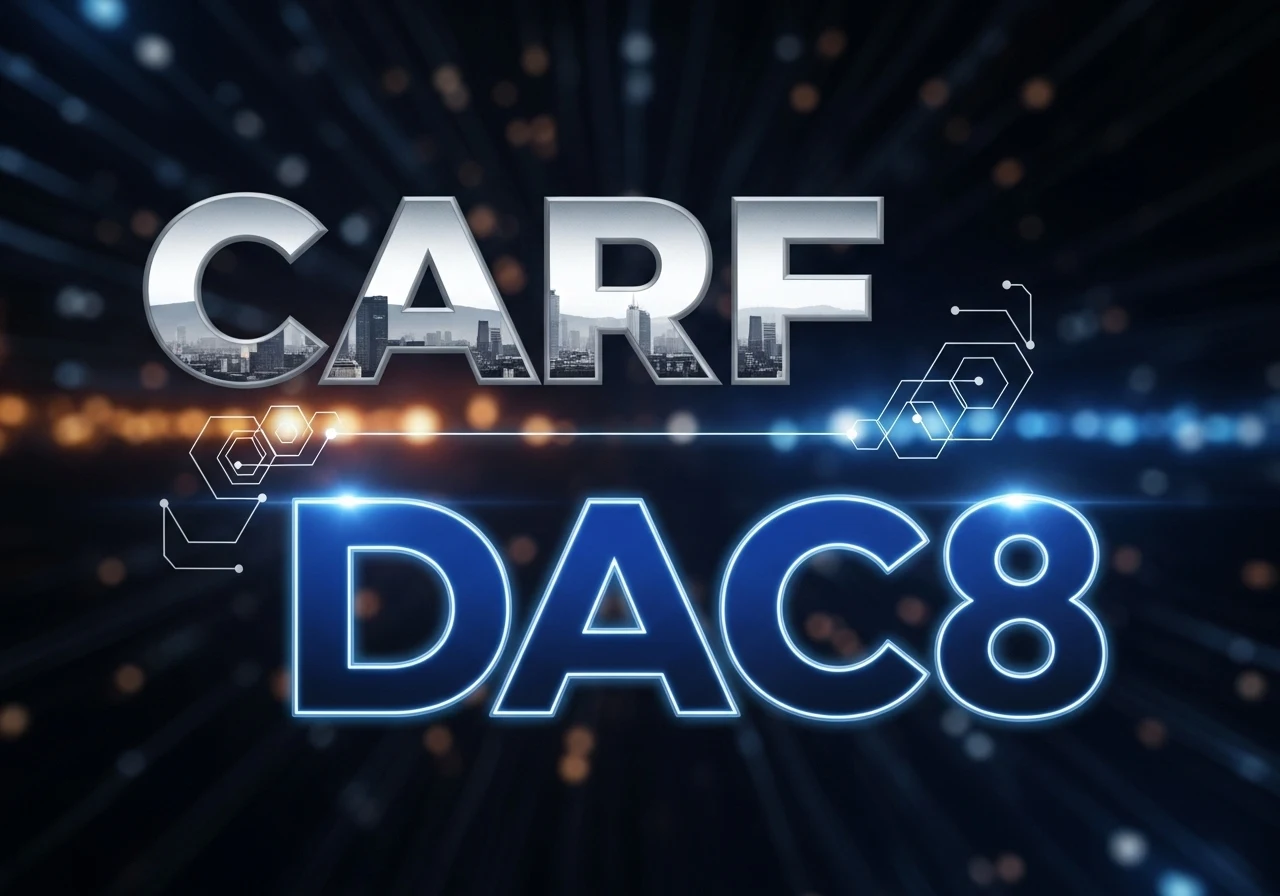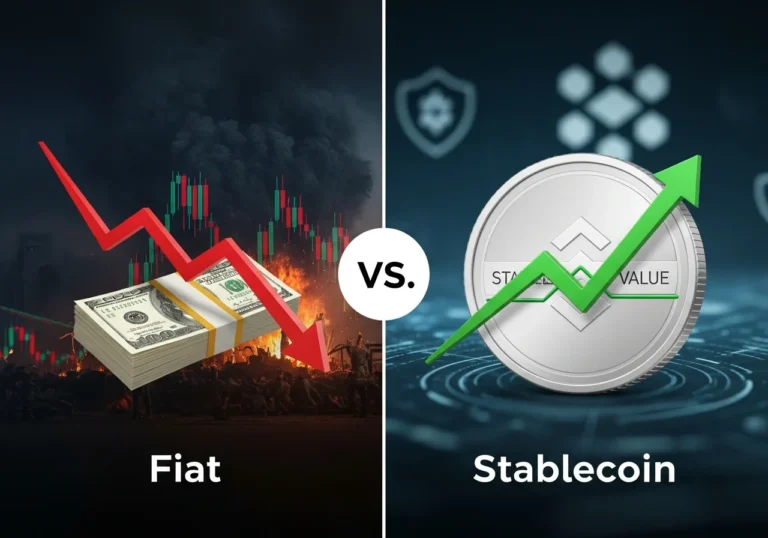CARF and DAC8 Explained: The New Global Tax Reporting Rules Starting in 2026
CARF and DAC8 are technical names, but their effect is simple: more reporting, more data sharing, and less hiding across borders. I’ll explain what that means for you. No long legal quotes. Just practical sense.
What is CARF and why it matters

CARF stands for the Crypto-Asset Reporting Framework. It is a set of model rules created to tell countries how to collect and share information about crypto-asset transactions. The idea is to treat certain crypto businesses like banks or brokers for reporting purposes. That way, tax authorities can automatically exchange information about users’ crypto activity with each other.
CARF grew from a simple truth: when money crosses borders, tax authorities want to know. Crypto makes that easy — and that is why governments want standardized reports they can trust.
How DAC8 fits in

DAC8 is the European Union’s formal step to make CARF-style reporting work inside the EU. It updates existing rules on administrative cooperation so EU countries will collect and share crypto-asset information much like stock trades or bank interest are already shared. Put plainly: CARF is the global model; DAC8 is the EU’s version that puts that model into law for member states.
When the rules start and the basic timeline
CARF model rules and DAC8 are timed so that reporting begins for activities from 1 January 2026. That means the first reports will be collected for calendar year 2026 and then exchanged the following year under the normal schedules set by the framework. In practice, many countries expect providers to submit reports by the spring following the reporting year (often by 31 May). That gives firms time to gather data and prepare files.
This is not a distant fantasy. It is imminent. If you use certain crypto services now, your activity could be reported under these rules.
Who has to report?
The rules target Reporting Crypto-Asset Service Providers. That name covers a wide list, depending on local law, but generally includes:
- Exchanges where people buy and sell crypto.
- Custodial wallets that hold keys for users.
- Certain broker-like services and trading platforms.
- Some DeFi services where a clearly defined provider exists under local law.
Because DAC8 is broad, EU governments often interpret “provider” in a way that catches many modern services. The bottom line: if a business acts like an exchange, a custodian, or an intermediary, it will probably be asked to report customer data.
What information will be shared?
The reports are detailed. Typical fields include:
- Account holder name and tax ID.
- Wallet or account identifiers.
- Transaction dates and amounts.
- Types of crypto-assets transferred or converted.
- Balances at year-end in certain cases.
Again, the idea is to give tax administrations the ability to match crypto activity to taxpayers. The content and format follow CARF model rules so that different countries can read the same kinds of files.
Why this matters to ordinary users
You might not run an exchange. Still, the new rules matter because:
- If your exchange reports your trades, your local tax authority may receive that file automatically from another country.
- Reporting reduces the chance of accidental underreporting being overlooked.
- It also creates an audit trail: transfers between wallets, large sales, and cross-border moves are easier to trace.
That means simple steps — like keeping a clean record of buys, sells and transfers — will help avoid headaches down the line.
How CARF and DAC8 reduce tax gaps
Tax authorities call the money they miss “the tax gap.” CARF and DAC8 aim to close parts of that gap when crypto is involved. They work the same way as information exchange for bank interest or dividends: reporting by service providers, automatic exchange between authorities, then matching against taxpayers’ returns. This is effective because matching is largely automated today, and cross-border data gives tax auditors leads they didn’t have before.
Common misunderstandings
Let’s clear a few things up with examples:
- Myth: “Crypto is anonymous, so they can’t see my trades.”
Reality: Many exchanges and custodians collect identity data. When they report, that data travels between tax agencies. - Myth: “If I move coins from one wallet I control to another, it’s invisible.”
Reality: Some platforms require you to identify withdrawal addresses or link accounts. Also, block analysis tools can connect addresses. Reporting focuses on accounts at providers, but investigators can follow chains too. - Myth: “Only big players matter.”
Reality: Small transfers add up. Many small unresolved items are what make up a big tax gap.
What businesses must do to prepare
If you run a crypto business, these steps are practical and necessary:
- Map your data: know what personal and transaction data you collect today.
- Gap analysis: find missing fields required by CARF/DAC8.
- Build secure reporting pipelines: generate files in the required formats and protect them.
- Privacy review: check policies and give customers relevant notices about reporting.
- Internal controls: set auditing procedures so reports are accurate.
Some firms may need to change wallet architectures to link identifiers to accounts. Others will need better KYC and record retention.
What individuals should do now
You don’t need panic. But do this:
- Keep a tidy record of buys, sells, swaps, and transfers.
- Save receipts, exchange statements, and wallet export files.
- When you use a new service, read its privacy and tax reporting terms.
- If you want certainty, ask your tax advisor how to report crypto gains in your country.
Good records make tax life easier and more predictable.
How privacy and data protection are handled
CARF and DAC8 focus on tax transparency, but data protection rules still apply. Official guidance usually requires secure transmission and limits use to tax purposes. Many countries will add local safeguards. That said, cross-border sharing increases the reach of data, so companies and regulators are wrestling with how to balance privacy and enforcement. Expect compliance teams and privacy officers to play a big role in 2025–2026.
Simple scenarios
- Alice uses Exchange A in Country X. Exchange A reports Alice’s trades under CARF. Country X shares that info with Alice’s tax country. Alice receives a query if she didn’t report gains.
- Bob sends tokens from a custodial wallet to a third-party exchange. The receiving exchange records Bob’s deposit and reports it. If Bob later sells and makes a gain, the trail exists.
These examples show that reporting is focused on accounts at providers, but the net reaches many kinds of activity.
Enforcement and penalties
Like other areas of tax law, national penalties vary. Some countries will use the new data to send correction notices. Others may open audits. Penalties can range from fines to interest charges on unpaid tax. The best defense is clear records and voluntary correction where mistakes are found.
Policy debates and fairness
People worry about fairness. Critics say CARF/DAC8 may:
- Impose heavy compliance costs on small providers.
- Affect privacy and civil liberties.
- Push activity into unregulated corners.
Supporters argue these rules level the playing field between traditional finance and crypto, and reduce tax evasion. The debate is live in policy circles and will shape how strictly countries enforce the rules and how they design local law.
Practical checklist for 2025 (what to do before rules fully apply)
- For individuals: gather 2023–2025 statements, export wallet transaction histories, and get a tax advisor if unsure.
- For businesses: complete data mapping, start test reporting, and consult legal counsel about DAC8 transposition in your jurisdiction.
- For developers: document how identifiers link to users and plan logging/retention to meet reporting needs.
Simple steps now avoid big problems later.
To Recap
- CARF is the global model for crypto reporting; DAC8 is the EU law following that model.
- Reporting applies from 1 January 2026 for many jurisdictions, with first exchanges the following year.
- Reporting targets crypto service providers: exchanges, custodians, and similar platforms.
- Keep clean records: trades, transfers, receipts, wallet exports. That helps if tax authorities come asking.
- Firms need data mapping, secure reporting, and privacy reviews now.
FAQ
Q: Will my private wallet on my phone be reported?
A: Purely non-custodial wallets you control without a third party are generally not reported by CARF/DAC8 themselves. But if you transfer coins to a custodial service that reports, that activity can be linked to you.
Q: Does this mean the tax office will take my crypto?
A: Not automatically. These rules are about information. Authorities use the information to check returns. If someone owes tax, an enforcement process follows national rules.
Q: Can I opt out of reporting?
A: No. Reporting is done by service providers and exchanged between tax authorities under legal agreements. Individuals cannot opt out.
Q: Will this stop crime?
A: It makes hiding crypto activity harder. CARF and DAC8 are tools for tax compliance, not a complete solution for all illicit activity. Law enforcement has other tools for criminal investigations.
Q: Who can I ask for help?
A: A tax advisor familiar with crypto or the compliance officer at your service provider can guide you.

Hello, I’m Edmilson Dias, founder of CoinBringer. I created this platform to guide people through the fast-moving world of cryptocurrency with clarity and safety. With years of research in blockchain and digital security, my goal is to translate complex topics into practical knowledge, offering reliable tutorials, safety insights, and guidance for both newcomers and experienced users.
Discover more from CoinBringer
Subscribe to get the latest posts sent to your email.







